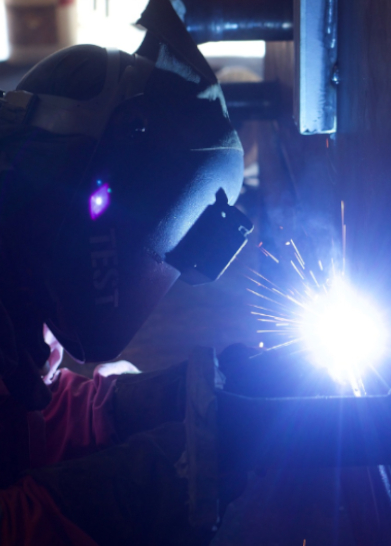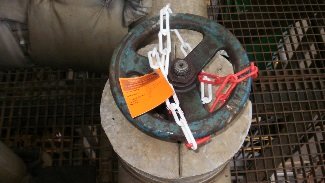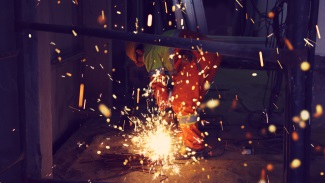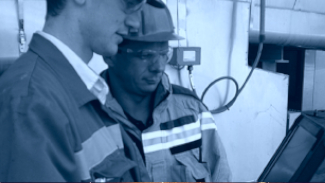Here are some of key observations
Involve the people.

By this, I don’t just mean in specification of what you want although of course, this is a must (more on that later). I mean design the system around the main participants. There’s an old adage in football about getting your best players on the ball and the same is true here. Make sure that those who have something to contribute are given the opportunity to do so. For example, why not have the Contractors participating in the risk assessment? They know best what they will be doing and therefore what potential hazards might be present. And in addition, they are more likely to know what tools they’ll be using, thereby ensuring the correct level of authorisation for the work and therefore less hold-ups while people scrabble about for the right signatures..
Involving people in the workflow alters mind-sets too. No longer do they see the obtaining of a permit as a necessary hurdle to overcome before the work can be done. Rather, they see themselves as a vital part of the risk assessment mechanism of doing things safely.
So Insight # 8 is – 'Involve the People'
Involving people is also true for specifying what you want in your digital management system. There is a basic dilemma here though. Those who hold the purse strings have no real understanding of the process and those that do, can be guilty of looking only to what they have done before. You need to be careful in assembling your team and a good blend of Vision and Experience is vital. Don’t think you can rely on existing expertise alone, or leave it to your Systems Analysts. And charge these people not only with the derivation of the system but also with the responsibility of ensuring that it works as well. Contractor Safety Management is key to the overall safety of the workforce and site.
Don’t just digitise what you do on paper now
Paper is paper for a reason. In a permitting sense, it has two major purposes. To communicate authorised instructions and to verify that these have been received (acted upon). When designing their digital systems, too many people make the mistake of just copying what the paper forms look like and digitising them. Like most, I imagine that you will have two major paper permits (hot and cold work) coupled with a variety of supplementary certificates for particular operations and hazards e.g. Confined Space, Working at Height etc. The reason you have these basic paper permits and all of those certificates is historical. You have grown up with hot and cold works and they are handy too, allowing different people to authorise perhaps. Then you have an incident with confined space so you add that as a certificate. The same for excavation. Sometimes, the incident isn’t ‘serious’ enough to warrant its own certificate, so you amend the Hotwork permit. Or perhaps someone hurts themselves using a drill, so you amend it again. Before you know where you are, you have a couple of basic permits that cover (badly) a multitude of risks and a plethora of certificates all requiring different inputs. And then you digitise it, maintaining all of this complication and arguably making the same mistakes that you made before but this time more efficiently (albeit perhaps more elegantly)

Example. We once went to a site to review their permitting system which was causing problems. They had the basic coldwork permit but the hotwork had been split into two, Naked Flame and Spark Potential. As well as these there were certificates for; Electrical Work, Excavations, Use of a Crane, Roofwork, Confined Space, ‘Clean Dirty and Inerted – all 3’, Breaking Containment on Toxic Materials, High Pressure Water Jetting and Working at Height. To be fair they had tried to involve the contactor in completing these pieces of paper but it had become so complicated that they had to make sure the contractor came in at least 24hrs before the job was required. This caused major logistical problems. Also, when mistakes were made, either huge costs were incurred in long waiting times or systems were bypassed. The system was in fact, unworkable and they had a serious accident.
Then when you devise the systems, you are faced with a dilemma. The people who want to bring about the digitisation don’t know enough about the systems so they entrust the ‘design’ to those that do. If you are unlucky, then these people will want to keep things as they are and create these same digital images of the paper system. If you are really unlucky, they will also incorporate some of the ‘trade mystique’ that has surrounded their actions for years in an attempt to keep others out.
Since you are setting out on the path, what you need is a cool period of evaluation before you even go near your programmers. You need to exercise those most valuable of attributes – your knowledge and intelligence to produce a system that works for you
Which brings me to Insight # 9 – 'Put some thought into it'
As we have said, the old paper system you will be replacing is largely about consent. Mirroring this digitally will give you precisely that. But is there more? Shouldn’t we be just as concerned about the hazards in the workplace and how we mitigate them as we are about consent? Would we have a better system if we were to integrate the risk assessment completely with the permit so that all risks are given the consideration they require and all subsequent work is suitably authorised.
The RAP system allows you to consider every risk that is present in the entire workplace. Not just as addendums to your existing permits but as entities within their own right. And if the mitigation of that risk requires a signature, or specialist PPE or a particular action, these can be addressed. All in a completely configurable manner so that you only concern yourself with what is present in the workplace.
Build the system for improvement.
I have said in my blogs before that I have one big bugbear. It stems from when I was in Operations on plant and it is the frequency and tendency of accidents and incidents to recur. It really upsets me that we sometimes find it so difficult to learn, even when the lesson might have been quite severe – perhaps a serious injury or maybe even a fatality. If your response to such events is to amend a procedure that no-one will revisit, put a poster up in the mess room or email all concerned then you have probably got it wrong. We built RAP with an editable knowledge base that could be updated immediately in the event of something happening. Thereby building Knowledge that is there for all time and can be used by every user, everyday.
Remember…."What will always be true is whilst an adequate system will reflect what the organisation requires, a good system will change behaviours. However, a great system will change cultures."







